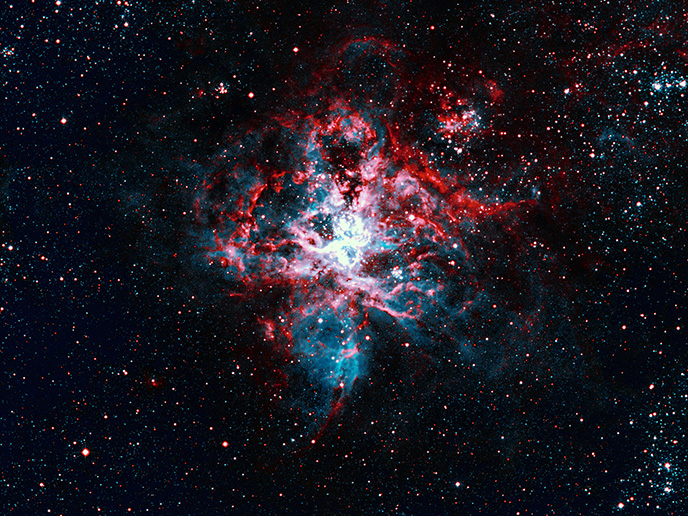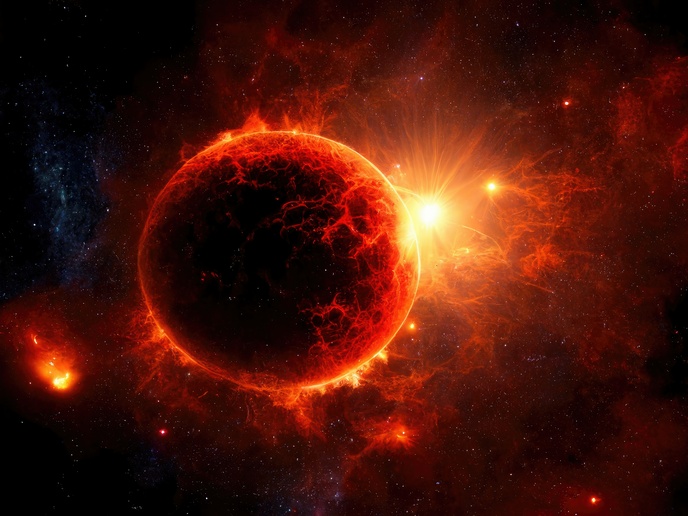Scientists focus on elliptical galaxies
Elliptical galaxies are the oldest and most massive galaxies observed in the universe today. The EU-funded Horizon 2020 ZoomInTheDust project investigated the early, dust-obscured phase in the formation of elliptical galaxies to better understand the mechanisms driving their intense star formation and their subsequent evolution. “The early stages of the formation of elliptical galaxies are best probed at far-infrared/sub-millimetre wavelengths, where the UV/optical radiation of the newly formed is reprocessed by dust,” says researcher Dr Mattia Negrello. Performed using the European Space Agency’s Herschel Space Observatory as part of the Cardiff University-led Herschel Astrophysical Terahertz Large Area Survey (H-ATLAS), the initiative exploited observations at sub-mm wavelengths. The survey identified distant dusty proto-ellipticals and among them, those that have been ‘gravitationally lensed’. This phenomenon is the result of the gravitational field of a massive object, such as a galaxy, bending passing light rays like a badly designed lens, as predicted by Albert Einstein in his Theory of Relativity. Cosmic telescopes Because different photons reach the Earth by travelling completely different paths around the ‘lens’, multiple images of the background galaxy are observed, which sometime blend together to form a ring-like structure, known as an Einstein ring. The multiple images are usually scaled-up versions of the background galaxy, thus offering a magnified view of it. “Gravitational lenses are natural cosmic telescopes: they allow us to detect faint distant galaxies and to see their fine scale details,” explains Dr Negrello. “By boosting the brightness of sources and by increasing their angular size in the sky, gravitational lensing provides a magnified view of the distant universe.” ZoomInTheDust exploited a new methodology for the identification of lensing events that Dr Negrello validated using the first data collected by the H-ATLAS. Key results include the largest sample of sub-mm selected lensed galaxies to date. These are being used to investigate the early stages in the formation of the most massive galaxies in the universe and probe the properties of the interstellar medium in the distant universe. Findings also show that most of the brightest sub-mm galaxies in the universe are lensing events, and not intrinsically super-bright ‘monster’ galaxies, thus providing new important constraints for models of galaxy formation and evolution. How galaxies form The project also developed code for modelling sub-mm selected lensed galaxies that, for the first time, extends state-of-the-art lens modelling and source reconstruction methods to deal with interferometric data. Interferometry involves techniques that superimpose electromagnetic waves, exploiting the phenomenon of interference to extract information. By applying the code to existing interferometric data from H-ATLAS lensed galaxies, researchers reassessed previous analysis and provided more reliable estimates of the magnification factor of these galaxies and of the size and morphology of their star formation regions. According to Dr Negrello: “It is believed that massive galaxies are formed either by the collision of two independently formed galaxies or via the constant accretion of gas from the surroundings. Although these different scenarios are still the subject of a very active debate within the astronomical community, analysis of the H-ATLAS lensed galaxies seems to favor the latter mode of galaxy formation.” ZoomInTheDust is already benefitting the scientific community with the H-ATLAS sample of lensed galaxies providing excellent targets for on-going and future follow-up observations that probe with unprecedented detail the morphological and dynamical properties of dusty star forming galaxies. “The project represents a new frontier in the field of gravitational lensing, which until now was the exclusive domain of optical and radio astronomy,” Dr Negrello concludes.







